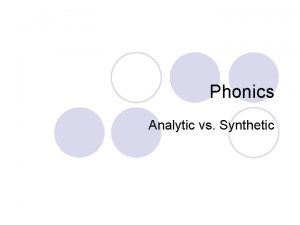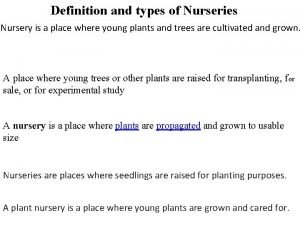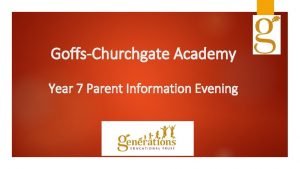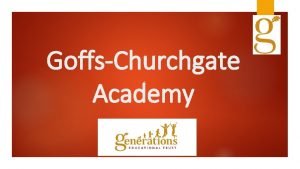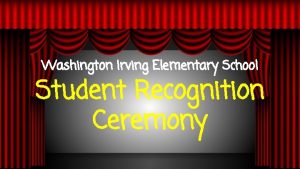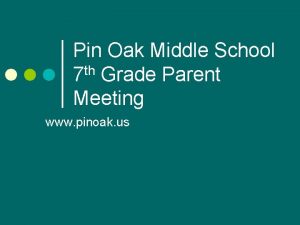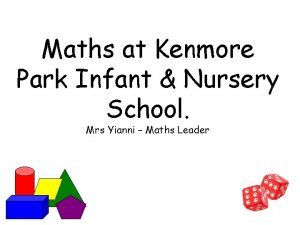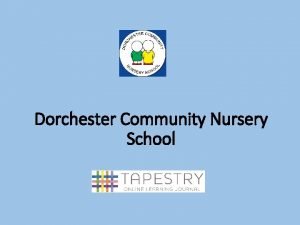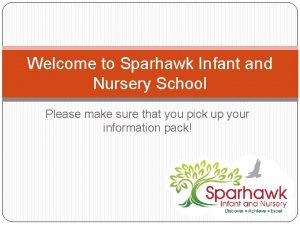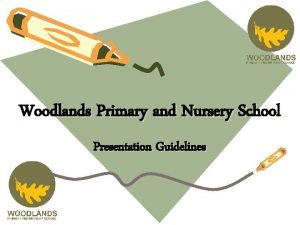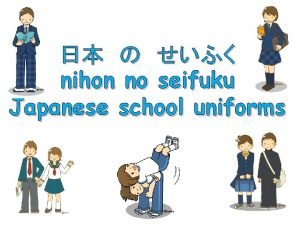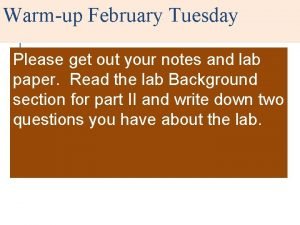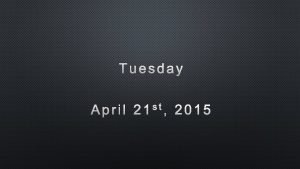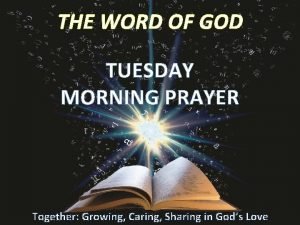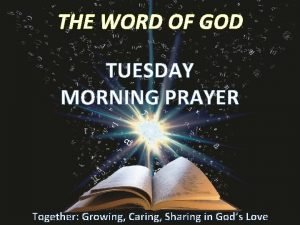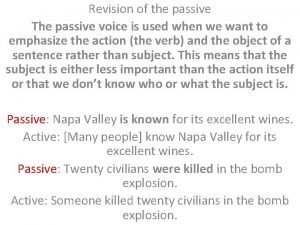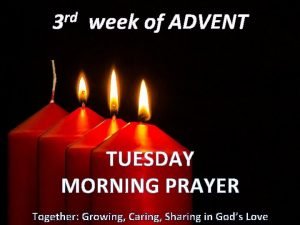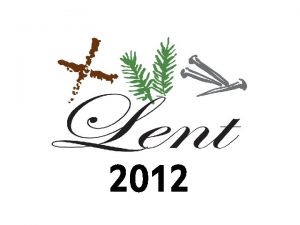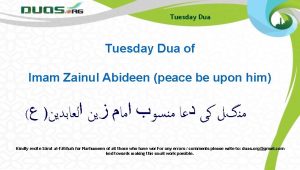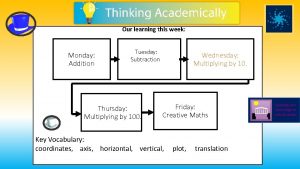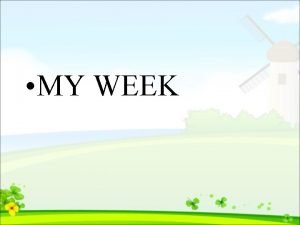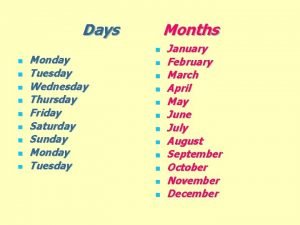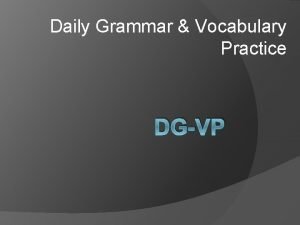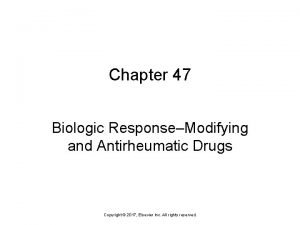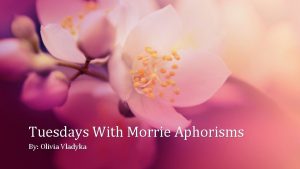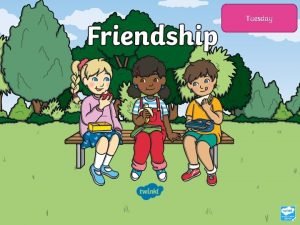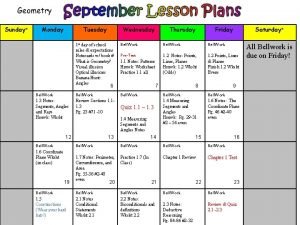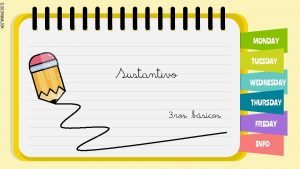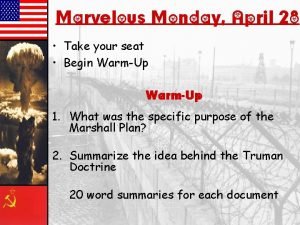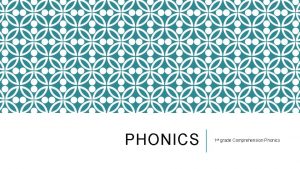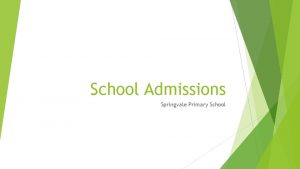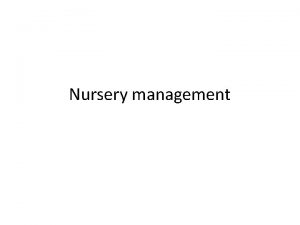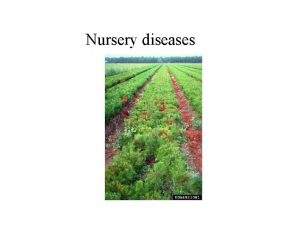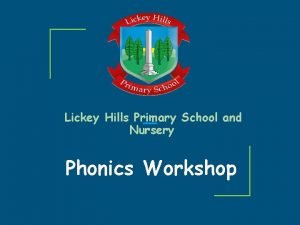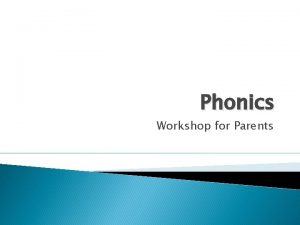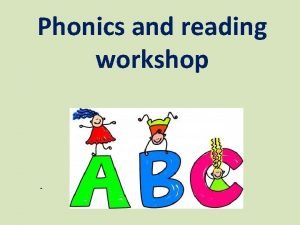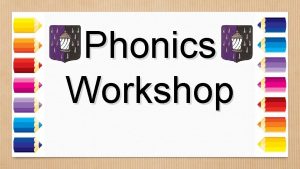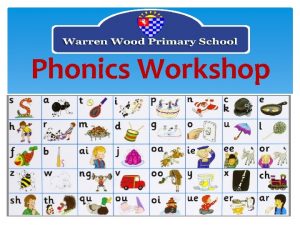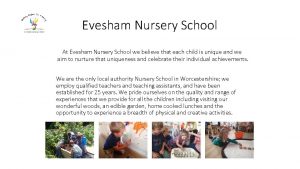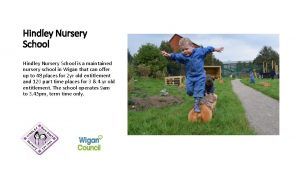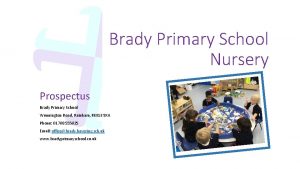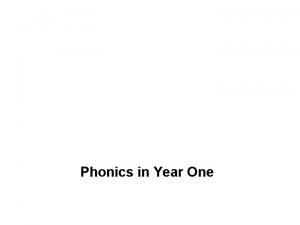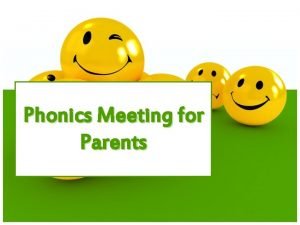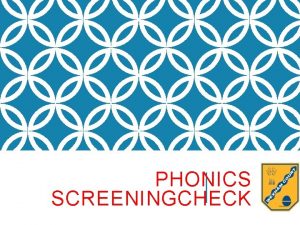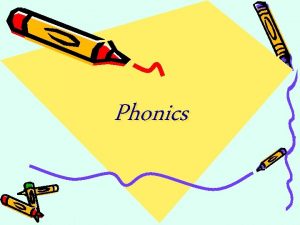Phonics Workshop Goffs Oak Primary Nursery School Tuesday






































- Slides: 38

Phonics Workshop Goffs Oak Primary & Nursery School Tuesday 8 th July 2014 Rebecca Watt – KS 1 Leader

‘Housekeeping’ ØRefreshments – help yourself at any point ØToilets – in foyer ØFire bell – none planned, if goes off exit and assemble on playground. ØPlease sign in on the table at the back so we know who is on site ØAsk questions! 04/11/2020 Phonics Workshop 2

Overview of the workshop ØBackground and history ØWhy phonics? Ø‘Letters and Sounds’ and how it is taught within school. ØPronunciation of sounds ØGovernment Phonics Screening Check ØPractical ideas for helping your child with phonics at home. v. This is an information evening, not about specific children. 04/11/2020 Phonics Workshop 3

Rose Report 2006, Sir Jim Rose - Independent Review of the Teaching of Early Reading. The review recommended ‘high quality phonics work’ as the main way to teach beginner readers to learn to read. It emphasised importance of speaking and listening from birth onwards at home, in early years settings and in schools. 04/11/2020 Phonics Workshop 4

Rose Report 2 elements to reading: Word recognition Comprehension Language comprehension processes GOOD Word recognition processes POOR Simple view of Reading: 04/11/2020 Phonics Workshop Language comprehension processes 5

What is phonics? n n A method of teaching people to read and spell by correlating sounds with symbols in an alphabetic writing system. Multi-sensory – see, hear, feel, do. 04/11/2020 Phonics Workshop 6

Why Phonics? n n Being able to read is the most important skill children will learn during their early schooling. Far-reaching implications for lifelong confidence and well-being. 04/11/2020 Phonics Workshop 7

• High Quality phonic teaching secures the skill of word recognition. • Once mastered, enables children to read fluently and automatically. • Once children are fluent readers they are able to concentrate on the meaning of the text. • Move from learning to reading for pleasure and purpose. • Teaches skills for spelling – being a resilient speller 04/11/2020 Phonics Workshop 8

English Language The English language is made up of: 42 phonemes Represented by 26 graphemes In 140 combinations (a, b, c, ss, igh). 04/11/2020 Phonics Workshop 9

Some definitions Phoneme – The smallest unit of sound in a word. Grapheme – graphical representation of a sound/ phoneme • for some phonemes, this could be more than one letter. e. g. t, ai, igh

Digraphs/ trigraphs Digraph = 2 letters making one phoneme Trigraph = 3 letters making one phoneme A consonant digraph contains two consonants next to each other, but they make a single sound. e. g. sh, ck, th, ll A vowel digraph contains at least one vowel but the two letters still make a single sound e. g. ai ee ar oy

Adjacent consonants Two or three consonants that can be sounded out separately cr, sp, bl, tw, sk, nd, lp, lk They can be in the initial or final point in a word. stop frog pond best twist scrunch street

Skills used in phonics Merging phonemes together to pronounce a word. To read an unfamiliar word, a child must link a phoneme to each letter or letter group in a word and then merge them together to say the word = Grapheme. Phoneme Correspondence (GPC) sh – o – p t– ai - l 04/11/2020 Phonics Workshop 13

Skills used in phonics Blending for reading Merging phonemes together to pronounce a word. Taught before shown letters – oral. To read an unfamiliar word, a child must link a phoneme to each letter or letter group in a word and then merge them together to say the word = Grapheme. Phoneme Correspondence (GPC) sh – o – p t– ai - l 04/11/2020 Phonics Workshop 14

Segmentation for spelling Hearing individual phonemes within a word. E. g. crash has 4 phonemes c – r – a – sh To spell a word a child must segment a word into the individual phonemes and choose a letter or letter combination to represent the phonemes. For example a child may write: ‘The cat was blak. It had a wiet tayl and a pinc noas. ’ 04/11/2020 Phonics Workshop 15

It iz tighm too gow hoam sed v kator pilla. But iy doat wont 2 gow howm sed th butorflie. iy wont to staiy heyr.

“It is time to go home, ” said the caterpillar. “But I don’t want to go home, ” said the butterfly, “I want to stay here. ”

Blending and segmenting n It is important that children know and understand that blending and segmenting are reversible. 04/11/2020 Phonics Workshop – Rebecca Watt 18

Phoneme buttons & robot arms sit leg can fit frog tent = One grapheme for one phoneme mop

ch i ll th a t b ear d f or t w ai t s t r o ng d u ck sh e d ch ur ch = Two/ three graphemes for one phoneme

c Phoneme frames a t sh i p th i ck er f r o g t r ee 04/11/2020 Phonics Workshop – Rebecca Watt 21

Have a go n Put these words into a phoneme frame: n n n n Shark Paint Helper Shrink Speech Pie Monkey 04/11/2020 Phonics Workshop – Rebecca Watt 22

High frequency and tricky words Alongside the teaching of phonics “tricky” high frequency words are not segmented but taught as whole words, recognised on sight. Eg: was, you, her, they, are, all, the, little, said, there, when, what, have, like 04/11/2020 Phonics Workshop 23

Pronunciation of sounds Careful pronunciation of sounds is very important to ensure we are good language models to children. Sounds should be pronounced softly and in a clipped, short manner. Not with a ‘schwur’ Otherwise: Spelling Cat e. g. Cur- a -tur 04/11/2020 Phonics Workshop 24

Sounds/ phonemes/ names? Teach letter names for initial letter of their name and as we need them. Not for decoding/ blending/ segmenting. Otherwise: Spelling Cat e. g. See-ai-tee 04/11/2020 Phonics Workshop 25

Letters and Sounds ‘Letters and Sounds’ was published following the Rose Report. It is a very straightforward document in which the programme for teaching children to read is set out in Six phases. 04/11/2020 Phonics Workshop 26

Phase progression Phase 1 – preparing the ground (phonic awareness – listening, alliteration, oral blending and segmenting, rhythm and rhyme) Taught in Nursery but continued alongside Phase 2 in Reception and into KS 1. 04/11/2020 Phonics Workshop 27

Phase progression Phase 2 – knowledge of common consonants and vowels, blending and segmenting CVC/CVCC words. Learning to read some tricky words. (Reception – up to 6 weeks) Phase 3 – Knowledge of one grapheme for each of the 44 phonemes, blending and segmenting CVC/ CVCC/ CCVCC words. Learning to read and spell tricky words. (Reception – up to 12 weeks) Phase 4 – Blending and segmenting previously learnt graphemes. Revision phase. (up to CCCVCC words & polysyllabic words) (Reception – 4 -6 weeks) 04/11/2020 Phonics Workshop 28

Phase progression Phase 5 – Learning alternative graphemes for phonemes – spelling & pronunciation. Learning to spell and read tricky words. (Throughout Year One) Phase 6 – Revision, consolidation, building fluency in reading. Focus on spelling (suffixes, past tense, spelling strategies – spelling tests) (Throughout Year 2) 04/11/2020 Phonics Workshop 29

Typical lesson 4 part lesson - usually up to 20 minutes. 1. Revisit/Review – practise previously learned letters or graphemes. GPC recall. 2. Teach – Teach new phonemes or graphemes. Teach one or two new tricky words. 3. Practise – Practise blending and reading words with new GPC. Practise segmenting for spelling words with new GPC. Pseudo/ alien words. 4. Apply – Read and/or write a caption or sentence using one or more tricky words and words containing the new phoneme/ grapheme. 04/11/2020 Phonics Workshop 30

Links to reading The ability to blend and segment is essential to being a successful reader and writer. At Goffs Oak we put a high priority on these early skills and only move a child onto the reading scheme when we feel they are ready.

Phonics Screening check – Year 1 • A statutory assessment for all children in Year 1 • It is designed to confirm whether individual children have learned phonic decoding to an appropriate standard. • Children are tested in the summer. “The check will be focused solely on decoding using phonics. The check will confirm individually whether pupils have learned phonic decoding to an appropriate standard by the end of Y 1 and identify pupils who need additional support from their school to catch up. ” Y 1 Phonics Screening Check Framework for Pilot in 2011 (Df. E) 04/11/2020 Phonics Workshop 32

What does the check consist of? 40 words that children read 1: 1 with a teacher A combination of real words and psuedo-words or ‘alien’ words. The check will be divided into two sections: Section 1: Phonemes that are usually introduced first to children learning to decode using phonics. Simple word structures. Section 2: Phonemes that are usually introduced later and graphemes that correspond to more than one phoneme. More complex word structures, including two syllable words.

The psuedo-words are shown to the children alongside pictures of imaginary creatures to ensure they are not trying to match the pseudo-word to a word in their vocabulary.

Moving into Key Stage 2 There is no need for daily phonics session if children are up to required standard. However, if they are not, they should have regular phonics teaching in order to help them progress. 04/11/2020 Phonics Workshop 35

Useful websites for Phonics http: //jollylearning. co. uk/2010/10/29/hear-the-letter-sounds/ http: //www. rainbowresources. co. uk/#/letters-sounds/4549552053 www. bbc. co. uk/schools/ks 1 bitesize www. topmarks. co. uk http: //www. kenttrustweb. org. uk/kentict/content/games/ www. ictgames. com/literacy http: //www. bbc. co. uk/schools/wordsandpictures/index. shtml http: //www. letters-and-sounds. com www. phonicsplay. co. uk http: //jollylearning. co. uk 04/11/2020 Phonics Workshop 36

Helping your child n n n Lots of talk and discussion about things they are doing/ seen/ heard. Play games e. g. I spy, I hear with my little ear Restrict technology time Consistent bedtime routine, quiet time before bed – non-stimulating, quality sleep time Don’t pressurise them

Good resources for using at home - Display an alphabet poster or chart in the kitchen. - Magnetic letters on the fridge. - Sound mats for use when writing. - A set of Flashcards of sounds for using in games. - Good quality story books and Non Fiction books. 04/11/2020 Phonics Workshop 38
 Synthetic phonics vs analytic phonics
Synthetic phonics vs analytic phonics Define nursery in agriculture
Define nursery in agriculture Goffs churchgate uniform
Goffs churchgate uniform Class charts goffs churchgate
Class charts goffs churchgate Irving school oak park
Irving school oak park Little oak middle school website
Little oak middle school website Oak grove city high school food court
Oak grove city high school food court Pin oak middle school website
Pin oak middle school website Kenmore park infant and nursery school
Kenmore park infant and nursery school Dorchester community nursery school
Dorchester community nursery school Sparhawk nursery
Sparhawk nursery Preschool in ukraine
Preschool in ukraine Nursery school presentation
Nursery school presentation Apolonio tree nursery
Apolonio tree nursery Japanese yellow school hat
Japanese yellow school hat Monday tuesday wednesday thursday friday calendar
Monday tuesday wednesday thursday friday calendar Factors affecting solubility
Factors affecting solubility Tuesdays with morrie comprehension questions
Tuesdays with morrie comprehension questions Tuesday morning prayer
Tuesday morning prayer Feathered friend by arthur c clarke
Feathered friend by arthur c clarke Tuesday morning prayers
Tuesday morning prayers Tuesday blessings
Tuesday blessings Which word
Which word Stock market political cartoon
Stock market political cartoon Stock market crash 1942
Stock market crash 1942 I want someone to love me into passive voice
I want someone to love me into passive voice Tuesday morning prayer
Tuesday morning prayer Shrove tuesday 2012
Shrove tuesday 2012 Dua for tuesday
Dua for tuesday On monday and tuesday
On monday and tuesday Thursday to saturday
Thursday to saturday Monday tuesday wednesday thursday friday saturday sunday
Monday tuesday wednesday thursday friday saturday sunday My friend jose will travel here on tuesday
My friend jose will travel here on tuesday On a tuesday
On a tuesday Accept the past as past without denying it or discarding it
Accept the past as past without denying it or discarding it Tuesday friends
Tuesday friends Tuesday bell work
Tuesday bell work Monday tuesday
Monday tuesday Marvelous monday terrific tuesday wonderful wednesday
Marvelous monday terrific tuesday wonderful wednesday
